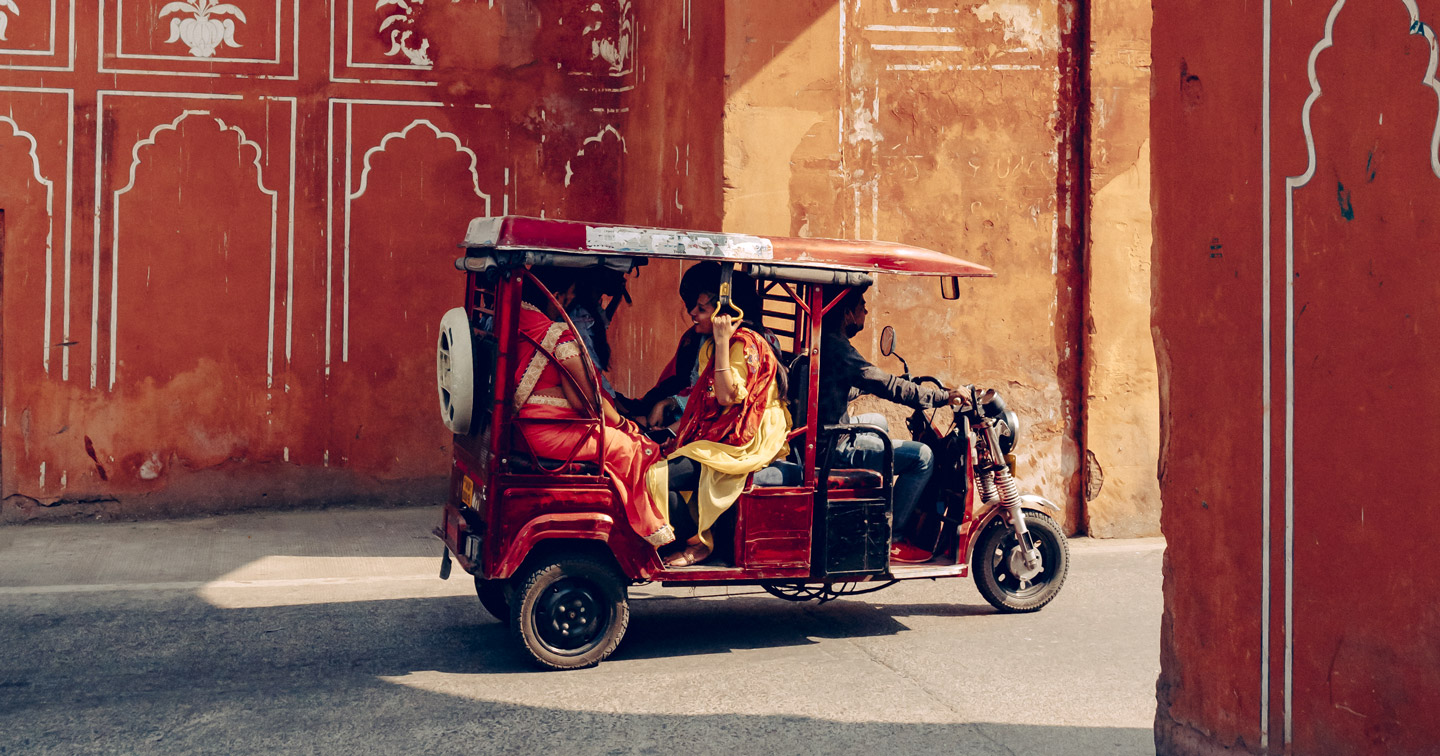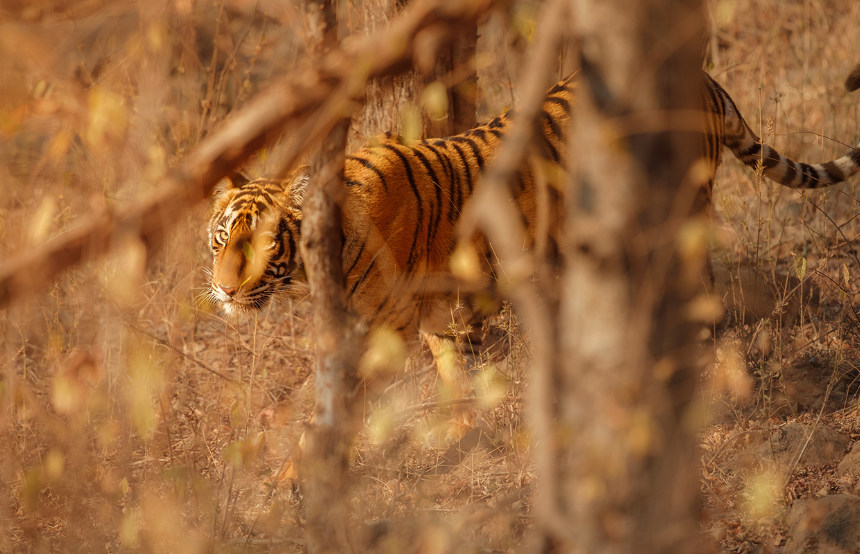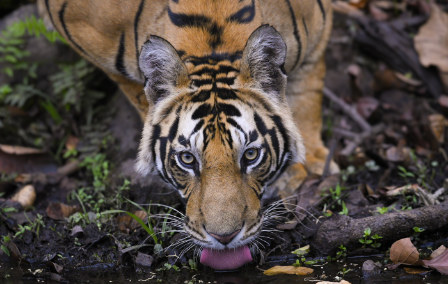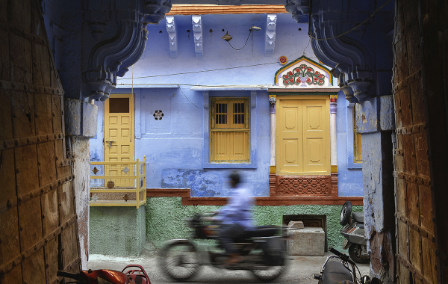Published 28th Jun. 2021
Reading time
The majestic 250 year old fort sits on the edge of a cliff, high above the sacred Narmada River, surrounded by the beautiful and unexploited town of Maheshwar.
Staying at Ahilya Fort is an extraordinary experience and one which is straight out of the 18th century; this is truly off the tourist trail and well worth it.
The views over the river and down onto the ghats are exceptional and there is a wonderful swimming pool within the fort gardens.
The food is delicious, and principally organic, grown in the fort's own vegetable garden. Meals are taken in different areas at different times; and all the charming rooms have superb views, balconies or gardens. Terraces and shady verandahs abound for relaxing on deep, cushioned mattresses or sofas; and a stroll down through the town to the ghats is a must.
The Rewa Society, a weaving centre housed inside the fort, is famous throughout India, producing some of the country's finest cloth and saris.
During your stay, you can visit the ruined city of Mandu, the island temple of Omkareshwar, take a boat ride during the day or by sunset, and visit the nearby villages. You can also camp out under the stars for a few nights at their camp further down the river.
Why We Love It
Your host, Prince Shivaji Rao Holkar, is often around, and will share the stories and history of the fort as well as his culinary skills with you during your stay.
This charming lodge is located alongside a stream on the edge of a dry deciduous forest of predominantly teak trees.
The spacious standalone suites have been totally rebuilt and the original guest areas have been extensively renovated and enlarged, and a beautiful swimming pool added. Meals are served on a shaded deck beside the pool and overlooking a renowned tiger trail. At sunset, cocktails are served under a huge Banyan tree full of giant flying squirrels.
Baghvan is a five minute drive from the entrance to one of India's richest yet lesser-known parks, Pench. This is a typical Central Indian teak jungle, with hilly terrain and several jungle streams, and it supports a rich variety of wildlife, including the tiger, leopard, wild dog, gaur, sambar, chital and brilliant birdlife. The Park's open habitat lends itself well to wildlife viewing, but is also beautiful in its own right.
Why We Love It
The name draws its inspiration from one of India's iconic symbols, the Bengal tiger; bagh means tiger and van means forest.
The brainchild of the Samode family, Samode Safari Lodge is in a secluded location by the new - and virtually unused - entrance to Bandhavgarh National Park.
Accommodation is in 12 state of the art villas, all with bags of space - each has both indoor and open air bathrooms, a private terrace, sitting rooms and sun deck. The main lodge overlooks the swimming pool, and the timber clad sitting room and dining room are raised on stilts, linked by wooden walkways.
As well as the swimming pool, there is a spa to ease those aching muscles after a hearty jungle walk. Away from the hotel, highly trained naturalists guide guests through the jungle on wildlife excursions, and show them sites such as the ancient temples and nearby villages.
The food is also delicious and each day brings a new menu, and occasionally a different location.
Why We Love It
As well as being extremely comfortable and bang on location, Samode Safari Lodge takes eco-tourism very seriously, which gets our vote any day.
Shergarh is an exclusive camp situated at the southern edge of Kanha National park, and providing a highly personalised wildlife experience for every guest.
Accommodation is in nine tents with twin beds which can be made into doubles. The tents are spread around a small wooded area and as a result each feels very private. The tents have a front veranda with deckchairs, and each has an attached bathroom with showers and plenty of piping hot water. The tents have thatched roofs which are watered in the warmer months to keep them cool. Each tent also has an air cooler and electricity (with generator back-up) for the warmer months and hot 'stone' bags are provided in the winter months.
Everyone eats together in the main dining room, and come the evening there should be stories to tell of the day's tiger sightings and other wildlife spots. Indian and Continental food is served, using home-grown vegetables, local produce and fish from the nearby lake.
Why We Love It
There are daily accompanied game drives within the reserve to view the diverse range of wildlife, and also early morning bird walks.
A small stylish lodge set in 44 acres of wildlife-filled jungle at the edge of the Satpura Tiger reserve.
Reflecting the heritage of Mughal Delhi, the elegant hotel combines graceful architecture with modern facilities and fabulous service.
The Imperial has all the facilities you would expect from a top-notch city hotel; five restaurants - Indian, Italian, French and casual bistros - two bars, a shopping precinct including India's first and only Chanel store, fitness centre, swimming pool, and beauty salon.
Despite being in the city centre, the hotel has three acres of lush greens, Royal palms, trees, palms, ferns, flowering plants and shrubs.
Why We Love It
Named after the British officer who set up the forest department in Central India and wrote a classic account of these highlands.
Set in nine acres of beautifully landscaped lawns, this regal palace, rich in history, is decorated with ornate artistic stone carvings and recalls a bygone era.
The hotel is located opposite Jai Vilas Palace, the ancestral home of the royal Scindia family.
In a quiet spot in the grounds, the Jiva Spa offers a range of traditional Ayurvedic treatments, massages, body scrubs and wraps with healing herbs and aromatic oils. The spa has single and double treatment rooms, and a meditation garden within ancient pillars.
Why We Love It
A 120-year-old palace, which has played host to the King of England and is now a heritage hotel owned by the Taj group.
Pronounced ma-hoo-a, this tree with its fleshy off-white flowers plays a central role in festivals and rituals, as the vitamins, minerals and sugar-rich flowers are used in a number of ways.
Jointly owned by the Taj Group of Hotels, Mahua Kothi's suites or Kutiyas (jungle village huts) have been stylishly designed in keeping with their surroundings in the 40 acre grounds of the renowned tented camp formerly known as Churhat Kothi. The food is authentic, home-style Indian but on request they will prepare continental cuisine, and they utilise the space on the property well by setting up many different dining venues. It is evident that the emphasis is on the guest 'experience', exemplified in the manner in which they handle the safaris into the 448 square kilometre Tiger Reserve and National Park in which the property sits. The safari experience showcases the jungle through its micro and macro ecosystems - refreshingly breaking away from the 'tiger centric' approach.
Why We Love It
The name Mahua Kothi draws its inspiration from one of India's most beautiful trees, the Madhuca Indica, or as it is commonly known, the Mahua or butter tree.

Our eager experts have explored India from its mountainous north to its tropical south in search of the best destinations, experiences and properties. In-country, our passionate team of Concierges share a love of India and are always on hand to impart extensive knowledge of their country. Working with phenomenal local guides across the country, we tailor experiences to your specific interests, from family-friendly block printing in Jaipur to city food tours and off-the-beaten-track wildlife safaris. Whether you’d rather call a historic palace or a humble guesthouse home, we can offer your dream accommodation while in India.
ENQUIRE NOWPractical advice and inspiration for your next trip

Searching for the best safaris in India? We’ve got you covered. Whether you’re keen to track tigers in Madhya Pradesh, admire Asiatic lions in Gujarat or photograph forest eagle owls in Kerala, your India holiday awaits. While Bengal tigers steal the limelight in Bandhavgarh National Park, don’t forget about the shaggy sloth bears (though they’re not as cuddly as they look). Feeling up for the adventure?
15th September 2025 - India Safari & Wildlife

With their sleek, tangerine-tinged coats, piercing eyes and commanding presence, nothing beats the thrill of seeing a tiger in the wild. And where better than in India, home to the largest population on Earth? But when it comes to the best time to see tigers in India, it all depends on what you want from your trip. Whether you’d rather vivid green landscapes or crowd-free safaris, we’ve got the insider intel on when to see India’s famous big cats.
23rd June 2025 - India Safari & Wildlife

India has long been a favourite destination here at Original Travel. It's the kind of country that inspires a lifelong affinity; travellers become hooked on the kaleidoscope of colour, energy and spirituality that pulsates throughout the nation. From India’s remarkable landscapes and diverse cities to its thriving wildlife and creative cuisine, there’s always more to explore. Keen to discover more reasons to visit India?
25th May 2025 - India Travel Inspiration

Our team of destination experts will get to know you and your unique requirements for your holiday

We work with you to build an ultra-personalised holiday itinerary with your choice of accommodation, experiences and activities

All of our holidays include little extras designed to make a big difference to your trip, from fast-tracking you through airport check-in and security to our network of local Concierges